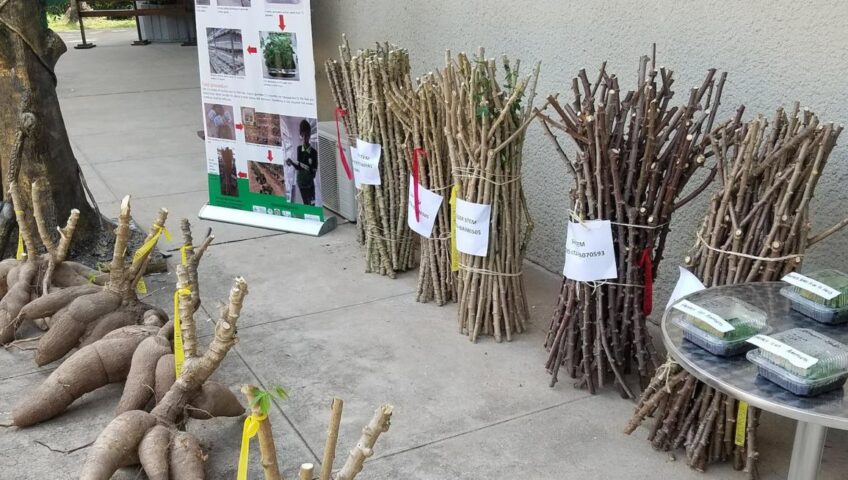However, pests and diseases cause significant production loss in cassava, and the most important of these are two groups of viruses — mosaic and brown streak viruses. Fortunately, breeders are developing improved varieties with better disease resistance, likely the most promising way to combat these problems. But how does a smallholder farmer get access to clean seed of these newer and improved varieties?
Traditionally, cassava, like most vegetatively propagated seed systems in Africa, were almost totally informal. Farmers saved and shared old and often disease-infected planting materials among themselves, while local government agencies and NGOs would sporadically multiply and give away free planting materials in an unsustainable and unreliable manner, but that is beginning to change.
Two of our grantees at the Bill & Melinda Gates Foundation posited a novel vision of economically sustainable cassava seed systems that would make new, clean planting materials available to farmers more reliably — by selling those materials. Revenues would encourage seed entrepreneurs to operate in a more sustainable manner, and farmers would have improved access to clean seed of improved varieties. The projects, BASICS in Nigeria, and BEST Cassava in Tanzania, started building these systems at the retail level, encouraging the creation of more than 600 registered cassava seed entrepreneurs — essentially, farmers with special training who produce certified stems for sale locally. This work succeeded in demonstrating that small-holder producers are willing to pay for certified stems of desired varieties and that cassava seed enterprises can generate adequate revenues to become profitable.
While the disease and market challenges are different in Tanzania and Nigeria, we are learning from elements in these systems models that we believe are common and can be applied elsewhere.
Perhaps the most fundamental lesson we have learned is that commercially oriented farmers will invest in better seed if it is available and convenient for them to access, if it performs better than what they are now growing, and if the varieties are appropriate for and desired by their local off-take markets. This is, essentially, the business case for farmers or their return on investment. We are seeing this in Tanzania, where newer varieties with higher virus resistance provide a quick payback for farmers who purchase clean planting stems from the increases in usable root harvests. And we see it in Nigeria, where off-take markets — particularly processing plants — value some varieties above others, thus incentivizing the farmers to grow these varieties.
Also clear is the importance of a sustainable business case for the seed producer. The profitability throughout the seed production chain requires advances in seed multiplication technology, but it also requires new systems to manage quality of planting material and marketing plans to demonstrate that these new varieties are clearly superior to what farmers already have. Seed businesses need access to foundation seed (starter material to multiply) and structures for its production and sale. In Tanzania, a new cadre of seed entrepreneurs was cultivated — foundation seed producers; in Nigeria, two new public-private partnerships were incubated to produce and sell early generation seed. The partnerships use new technologies developed by the program that greatly increase the multiplication rates in low-cost laboratories and screen houses. More recently, three private cassava processing factories in Nigeria have developed their own seed production capacities with a long-term plan to sell planting materials to out-growers.
One step further up the seed value chain, cassava breeding institutes also must evolve to produce the breeder seed that foundation seed producers need. The projects have worked with government research institutes to accelerate their production technologies of clean breeder seed and help them implement business operations to ensure that new, improved varieties flow into this seed system pipeline.
We could share many other lessons (such as––the need for strong linkages between breeding programs and the seed production systems; the importance of a fit-for-purpose seed quality assurance program at the national and local level; strong sector coordination with off-take markets as they mature; and many more). Nonetheless, we remain encouraged that despite this all being relatively new, we see strong evidence that seed growers can profitably produce and market their seed when connected to a high-functioning early generation seed production system. And more importantly, we see that it matters to farmers who are now able to increase their productivity and profitability from cassava.
Source: AGRILINKS

